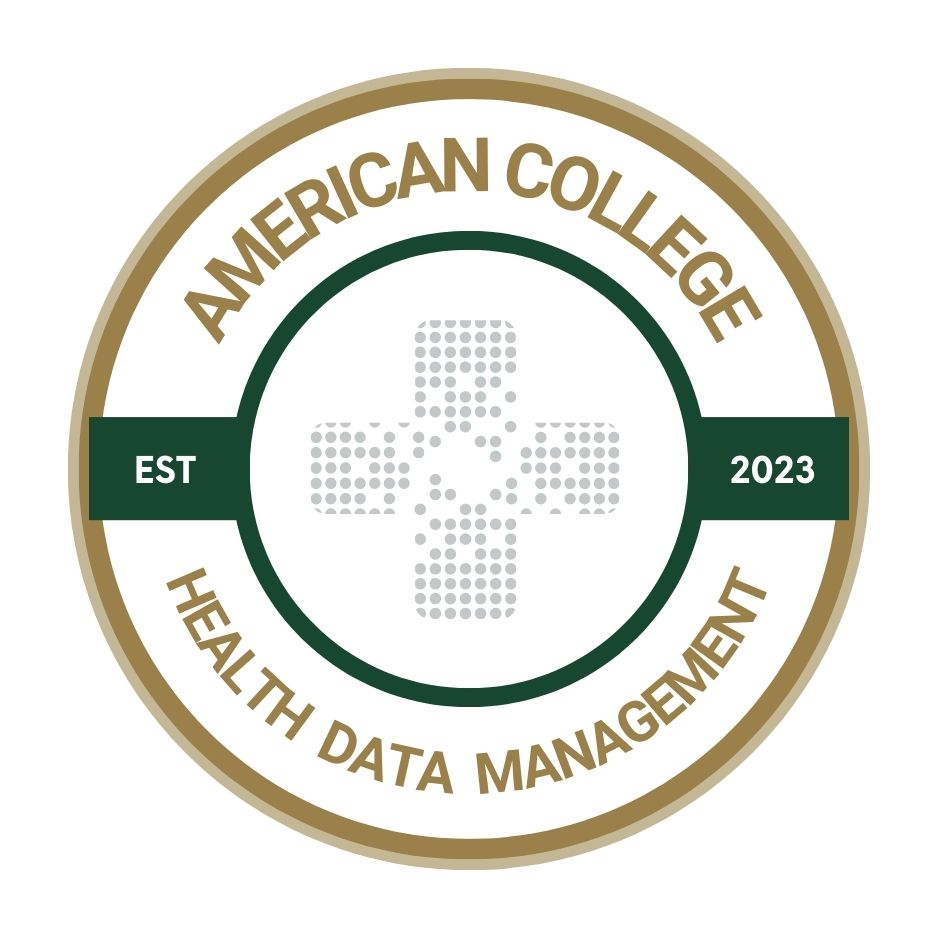Navigating the complex interplay between data, technology and leadership
ACHDM experts note that interoperability involves more than data sharing – it means enabling a culture that allows the free flow of ideas, innovation and optimal care experiences.

Interoperability has been a buzzword in healthcare technology circles for at least a decade. Now, the discourse has intensified.
Some stakeholders ask why the industry is still unable to share all patient data universally; others wonder which data should be shared; and many are waiting for the large-scale impact of the patient information that has been accumulating for years.
However, the question of interoperability – or the lack thereof – appears to be more than just a technical roadblock; it feels like an offshoot of a larger cultural issue endemic within the healthcare sector.
For decades, the progress of delivering better health and care has been stymied by a cocktail of issues — people working in silos, antiquated processes and underperforming technology. Whether it's misalignment among health systems, payers and governmental institutions, or the old guard fostering bureaucratic processes that hinder the sharing of ideas across departments, or even the technology that fails to deliver the expected user experience or impact — the growth of the sector is continuously hampered.
The ongoing debate in the industry may be deeply rooted in interoperability and data exchange, but it also involves the power of unrestricted data flow across healthcare settings to be harnessed. More than that, it emphasizes the need for the industry to facilitate the free flow of innovative thoughts, new ideas and better care models into every care setting, thus enhancing care experiences and outcomes for administrators, care providers, patients and families.
Before we dig deeper, let me share a compelling story from one of our fellows, Dr. Michele Bleech Napoliello. Her story exemplifies how interoperability can weave together data, technology and personal healthcare.
"Wearable technologies are more prevalent than ever," Napoliello notes. "In practical use, they can provide critical information to providers, thus bridging the data disconnect in patients who are poor historians, or by simply adding data points to quantify symptoms and aid in diagnosis and treatment."
She illustrates this with an event from her personal experience. "I can attest to bradycardia being detected by my own smartwatch. After feeling a bit 'off,' I opened the EKG watch function, but it displayed an error stating that my pulse was too low for that particular feature to provide a reading... I immediately made a physician appointment, and we determined that I had a rare side effect of a new medication I was taking and took action."
Napoliello's story underscores the vital role of data sharing enabled by advanced technology.
But how do we achieve this state of comprehensive interoperability encompassing not just data, but also the free flow of thoughts, ideas and innovations? What combination of people, process and innovative technologies will enable this?
First, it starts with good leadership facilitating robust communication. Second, not just the approach to delivering care needs to be reassessed, but the very systems and processes holding us back must be eradicated. Finally and crucially, the intelligent application of technology will play a significant role in our journey to success.
So, how does the industry conquer the barriers that have long held it back?
Leadership’s role
In the quest for comprehensive interoperability in healthcare, starting from data exchange to the dissemination of new ideas and better care models, good leadership stands as a cornerstone.
Leaders in healthcare organizations have a pivotal role in facilitating open communications, enabling idea exchange and ultimately setting the tone for a culture of innovation. This notion is echoed by our Fellows, who bring in years of hands-on experience and insightful perspectives to this discussion.
Dr. Zahi Jurdi highlights the significance of leadership in creating an environment conducive to innovation. He opines, "From my experience, the inclusion and recognition of any new thoughts are rooted in the cultural tone set by leadership. Do leaders with legitimate power or influence create an environment conducive to open dialogue? Organizational cultures that truly encourage innovation and failing forward are the ones that are able to effectively interoperate across care settings."
In a similar vein, Dr. Hamza Al Katranji addresses the frequent misconception of interoperability as a deeply technical term, reserved for software developers who can bridge different clinical systems. He advocates for a broader understanding of the term. "Interoperability is actually another term for communication in a special context. If people fail to communicate, coordinate, and handover ordinary patient care across the care continuum, digital interoperability is not going to fix this."
Fatma AbdelSalam further elaborates on the barriers to the inclusion of new ideas, specifically pointing out the role of effective communication among healthcare organizations. She highlights, "There are several factors contributing to the impediment of the inclusion of new ideas and thoughts across care settings, and among them is the lack of effective communication among different healthcare organizations. This makes it difficult to disseminate information, knowledge, and ideas across the healthcare continuum."
But what happens when leadership fails to truly represent or understand the needs of their team?
Dr. Stephen Liebowitz shares a scenario in which leadership disconnect can inadvertently become a barrier to progress. "The biggest barrier I have seen in organizations as it pertains to new thoughts and ideas on utilizing innovative technologies to deliver care, is that you have senior physician leaders, such as the CMO or CMIO, who cast their opinions which they believe reflect the thoughts of the physicians, but most of the time it has been the opposite of what the providers who are actually delivering patient care think and want.
“Front-line providers are looking for technology solutions to deliver care more efficiently and more effectively, so having those senior leaders who are providers should be boots on the ground and seek feedback from providers before making decisions that could have an impact on patient care."
Clearly, the role of leadership in promoting interoperability — of data, thoughts and ideas — cannot be overstated. By fostering open communication and ensuring that the voices of all stakeholders are heard and valued, leaders can catalyze the transition towards a more integrated and efficient healthcare ecosystem. This is not a trivial task, but the potential benefits for patient outcomes and overall healthcare delivery are immense and worth striving for.
A call to rethink systems
As the healthcare industry strives to foster interoperability, an important aspect that warrants our attention is the reassessment and transformation of existing systems and processes.
Both the approach to delivering care and the systems inhibiting progress require an overhaul. Fellows from the American College of Health Data Management bring in their diverse perspectives to shed light on how this monumental task can be accomplished.
Dr. Eric Weaver asserts that the shift towards value-based care is crucial for driving innovation and interoperability across different care settings. He explains, "We need to move from basic information exchange to apps that will use the whole portfolio of interoperability capabilities. Richer information exchange in support of alternative payment models will require RESTful APIs and interactions to integrate clinical decision support between EHR systems and external CDS applications."
Fred Bazzoli expands on this by illustrating the increasing emphasis on information sharing with a variety of entities, such as community care agencies, public health agencies and others, in light of changes in reimbursement approaches. "There is likely to be growing grassroots demand for easier access to patient health information," he predicts.
Technological advancement and its integration into healthcare processes take center stage in our experts' discussions. Dr. Zahi Jurdi emphasizes, "True integrated health systems have created processes that leverage technology to allow for the free flow of data and information."
Sharing this sentiment, Dr. Hamza Al Katranji notes that the industry must focus on key foundational processes like access to care, care coordination and value-based care processes. "This is the doorstep of health; this doorstep needs to be digitized sooner than later to untangle the already complex and redundant processes and give an opportunity for innovation," he states.
Dr. Shannan Swafford and Fred Bazzoli also highlight the need to update health policies and standards, like TEFCA, to facilitate the flow of information while maintaining data privacy and security. These changes are seen as crucial steps towards enabling broader and more effective data exchange across various healthcare entities.
The consensus among our experts is that the ultimate goal of these transformations should be improved patient care. As Fatma AbdelSalam succinctly puts it, "Quality improvement and patient safety processes are the most critical aspects that have to be emphasized, which will lead to more patient-centered care."
The role of technology
A smart and effective application of technology is seen by many experts as a crucial factor for success in improving healthcare interoperability.
Fred Bazzoli highlights leading organizations like Kaiser Permanente, Geisinger and Priority Health, which have demonstrated the effectiveness of leveraging technology to provide whole-patient care. He notes, "They can provide better holistic care that is better for patients, addresses more than medical needs and can be pre-emptive to better manage conditions and reduce the need for expensive acute or emergency care."
For Dr. Simon Linwood, the emergence of AI and advanced language models like ChatGPT holds exciting potential. "By harnessing AI-powered algorithms and natural language processing capabilities, we can bridge the gaps between various data formats and standards, enabling seamless communication and exchange of health information across disparate systems," he explains. This could result in improved patient outcomes, enhanced research collaborations, and a more interconnected healthcare ecosystem, ultimately driving innovation in the healthcare industry.
Fatma AbdelSalam highlights the potential benefits of adopting blockchain technology in healthcare, especially in terms of population health management and data sharing. She argues that blockchain can help healthcare providers identify and address health trends, patterns and risks, leading to targeted interventions and treatments, and preventive measures.
Dr. Stephen Liebowitz brings the discussion back to practical applications, sharing his experience with Epic Care Link. "The most tangible progress that I have seen with information sharing is the utilization of Epic functionalities, specifically with independent providers that are affiliated with a health system that has Epic. The utilization of Epic Care Link has provided an extension of the patient's chart to an independent provider, which enhances continuity of care."
The consensus among these experts underscores the importance of adopting and integrating innovative technologies in healthcare to improve interoperability. By doing so, the healthcare industry can ensure that it is equipped to deliver patient-centered care in an increasingly interconnected world.
Mitchell Josephson is president of the the American College of Health Data Management.
